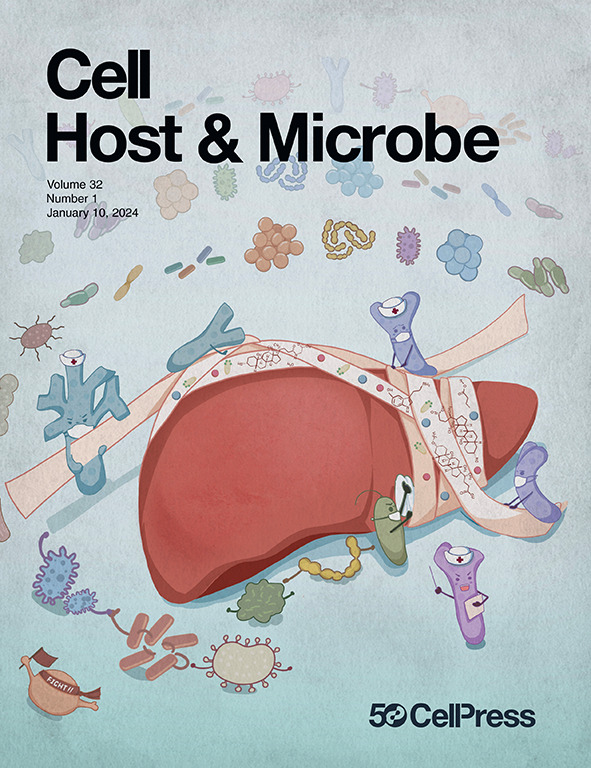种内动态是两种重要的皮肤微生物群落的明显稳定性的基础
IF 20.6
1区 医学
Q1 MICROBIOLOGY
引用次数: 0
摘要
成人面部皮肤微生物组在物种水平上非常相似,以痤疮角质杆菌和表皮葡萄球菌为主,但每个人都有独特的菌株群落。了解个体特异性群体如何聚集对于设计基于微生物组的治疗方法至关重要。在这里,我们使用4055个分离基因组和356个宏基因组,重建了人与人之间的进化历史,以揭示人与人之间的菌株动态。我们发现多个细胞通常参与传播,这表明有充足的迁移机会。尽管有这样的便利,但家庭成员只分享了他们的一些菌株。表皮葡萄球菌群落是动态的,每个菌株平均仅持续2年。在过渡到成人面部皮肤微生物组的过程中,痤疮C.菌株更稳定,定植率更高,表明这一窗口期可以促进治疗菌株的植入。这些以前无法检测到的动态可能会影响微生物组疗法的设计,并激发其对宿主作用的研究。本文章由计算机程序翻译,如有差异,请以英文原文为准。

Intraspecies dynamics underlie the apparent stability of two important skin microbiome species
Adult human facial skin microbiomes are remarkably similar at the species level, dominated by Cutibacterium acnes and Staphylococcus epidermidis, yet each person harbors a unique community of strains. Understanding how person-specific communities assemble is critical for designing microbiome-based therapies. Here, using 4,055 isolate genomes and 356 metagenomes, we reconstruct on-person evolutionary history to reveal on- and between-person strain dynamics. We find that multiple cells are typically involved in transmission, indicating ample opportunity for migration. Despite this accessibility, family members share only some of their strains. S. epidermidis communities are dynamic, with each strain persisting for an average of only 2 years. C. acnes strains are more stable and have a higher colonization rate during the transition to an adult facial skin microbiome, suggesting this window could facilitate engraftment of therapeutic strains. These previously undetectable dynamics may influence the design of microbiome therapeutics and motivate the study of their effects on hosts.
求助全文
通过发布文献求助,成功后即可免费获取论文全文。
去求助
来源期刊

Cell host & microbe
生物-微生物学
CiteScore
45.10
自引率
1.70%
发文量
201
审稿时长
4-8 weeks
期刊介绍:
Cell Host & Microbe is a scientific journal that was launched in March 2007. The journal aims to provide a platform for scientists to exchange ideas and concepts related to the study of microbes and their interaction with host organisms at a molecular, cellular, and immune level. It publishes novel findings on a wide range of microorganisms including bacteria, fungi, parasites, and viruses. The journal focuses on the interface between the microbe and its host, whether the host is a vertebrate, invertebrate, or plant, and whether the microbe is pathogenic, non-pathogenic, or commensal. The integrated study of microbes and their interactions with each other, their host, and the cellular environment they inhabit is a unifying theme of the journal. The published work in Cell Host & Microbe is expected to be of exceptional significance within its field and also of interest to researchers in other areas. In addition to primary research articles, the journal features expert analysis, commentary, and reviews on current topics of interest in the field.
 求助内容:
求助内容: 应助结果提醒方式:
应助结果提醒方式:


